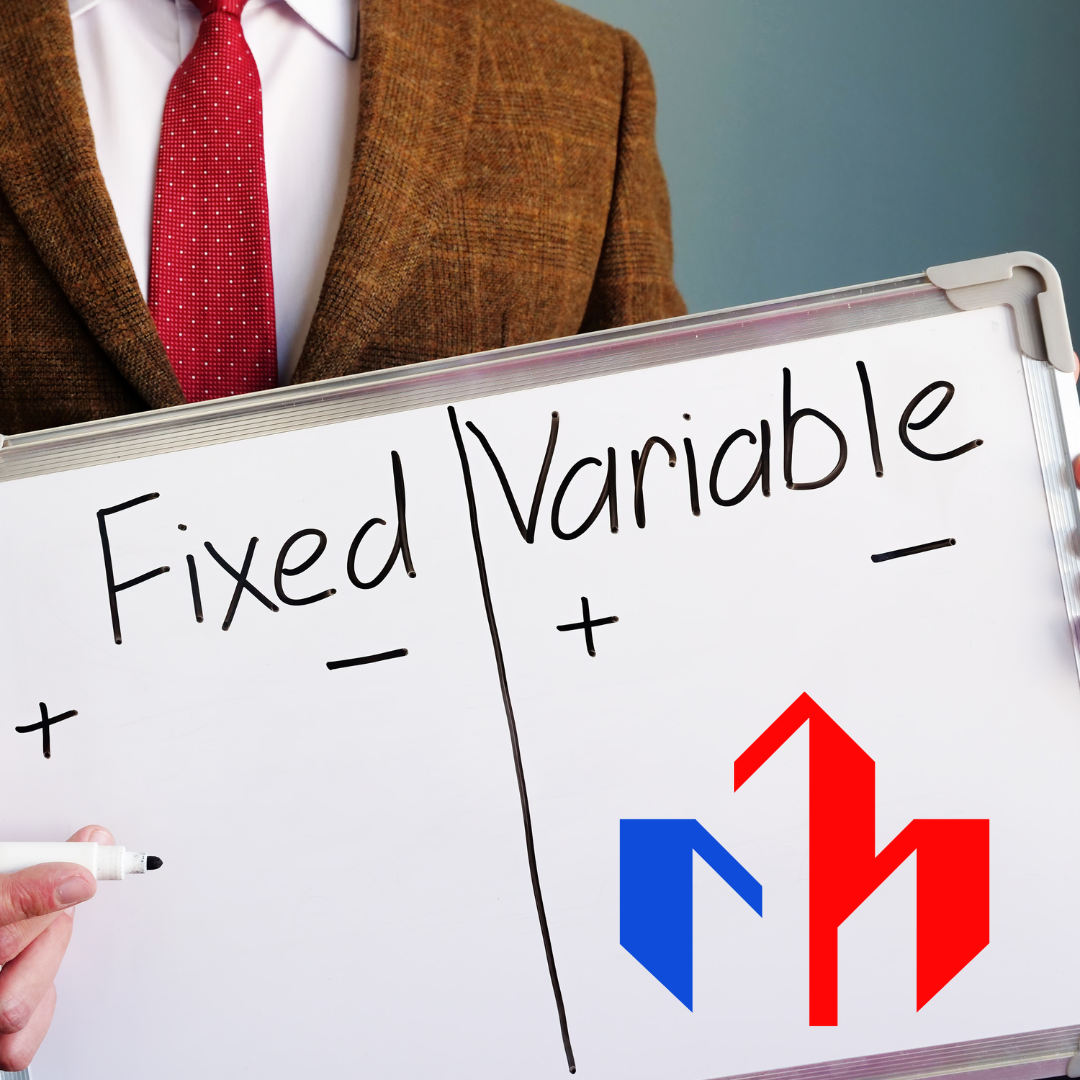Types of Mortgage Frequencies Available
There are a few different payment frequency options available for mortgages. You can opt to make payments daily, weekly, bi-weekly, semi-monthly, or monthly. But what distinguishes all of these choices?
Here’s a quick overview of the different mortgage frequencies and what they might mean for you:
-Daily: You’ll make your mortgage payment every day with this option. If you want to get ahead on your payments, this could be a good choice for you.
Types of Mortgage Frequencies Available
There are a number of different mortgage frequencies available to Canadian homeowners. The most common are semi-annual (every six months), annual and bi-weekly. You can also choose to make accelerated bi-weekly payments, which will help you pay off your mortgage faster and save on interest costs.
Every six months: This is the standard frequency for most mortgages in Canada. Your payments are due every six months, on the first of the month.
Yearly: You make one yearly payment on the first of the month with an annual mortgage. This option is not as frequent as semi-annual or bi-weekly mortgages, but it can be a more economical choice if you want to save on interest by making larger payments less often.
A bi-weekly mortgage entails 26 payments per year (every two weeks), as opposed to 12 semi-annual mortgage payments. This can help you save money on interest costs and pay off your mortgage more quickly.
An accelerated bi-weekly mortgage is similar to a regular bi-weekly mortgage, but with more frequent payments. This means that instead of making 26 payments per year, you make 28 – the equivalent of making one extra monthly payment each year. This can help you shorten your mortgage term and save a significant amount of money in interest costs.
The Pros and Cons of Different Mortgage Frequencies
How often do you have to make a mortgage payment?
The term of your mortgage is the number of years you have to repay the money you borrowed. The most frequent mortgage terms are 5, 10, 15 and 30 years. The term of your mortgage impacts both how much interest you’ll pay and how much your monthly payments will be.
There are pros and cons to both bi-weekly and monthly payments. Bi-weekly payments may be more expensive overall, but they can help you stay on top of your bills and avoid late fees. Monthly payments may be cheaper overall, but you run the risk of falling behind on your payments and incurring late fees. Ultimately, it’s up to you to decide which payment schedule is best for your needs.
The frequency of your payments (the interval at which you make payments on your mortgage) does not have an impact on the amount of interest you pay over the life of your mortgage. It does, however, determine how quickly your mortgage is paid off.
Paying every two weeks instead of monthly will allow you to make one extra payment each year. This will shorten the amortization period of your mortgage and save you money on interest costs over the life of your loan.
The disadvantages of bi-weekly payments are that you have to be more disciplined in making sure you have the money available every two weeks, and some lenders charge a fee for administering bi-weekly payments.
Why Choose a Mortgage Frequency that’s Right for You
Your mortgage frequency is the timetable according to which your payments are applied to your remaining mortgage balance. The most frequent choices are monthly, bi-weekly and accelerated bi-weekly.
The frequency of your mortgage payments can affect both the amount of interest you’ll pay over the life of your mortgage and when you’ll finally pay off your mortgage. Depending on your goals and financial situation, one type of frequency may be more advantageous for you than another.
The most common types of mortgage frequencies are as follows. Read on to learn more about each one so that you can decide which option is best for you:
With monthly payments, your interest and principal are paid once per month. This type of payment schedule requires the least amount of cash flow each month, making it a good option for borrowers who are on a tight budget. Monthly payments also offer the benefit of reducing your overall interest costs by giving you more time to pay off your loan balance.
With bi-weekly payments, you’ll make a mortgage payment every two weeks instead of once per month. This can help you repay your loan more quickly and save money on interest costs, since there are 26 bi-weekly periods in a year (compared to 12 monthly periods). Bi-weekly payments can also be easier to budget for than monthly payments, since they align more closely with most people’s paydays.
With accelerated bi-weekly payments, you’d pay half of a monthly amount every two weeks. In other words, you’d make one extra monthly payment each year. This could help you pay off your mortgage more quickly and reduce the amount of interest you pay overall. If you regularly receive bonuses or other forms of supplemental income, accelerated bi-weekly payments could be especially beneficial.
How to Compare Mortgage Frequencies
There are a few things to take into consideration when you compare mortgage frequencies. The interest rate is generally the most important element, but there might be other factors that come into play as well.
The frequency of mortgage payments can be either high or low, each with its own advantages and disadvantages. High frequency mortgages usually have lower interest rates, but also come with higher monthly payments. Low frequency mortgages often have higher interest rates, but have lower monthly payments.
The length of the mortgage is another factor to take into account when comparing frequencies. High frequency mortgages are generally shorter, while low frequency mortgages tend to be longer. Consequently, you’ll have to make more payments with a high frequency mortgage, but you’ll pay less interest over the life of the loan.
Another consideration is if you anticipate making any large, one-time payments on your mortgage. If so, then a high frequency mortgage could be a better fit for you. This is because, with a high frequency mortgage, any lump sum payment would go straight towards the principal of your loan. With a low frequency mortgage, any lump sum payment would first go to paying down the interest on your loan before it starts to pay down the principal.
Remember that different lenders offer different mortgage rates and terms. Make sure to compare offers from several different lenders before making a decision.
The Advantages of a Bi-Weekly Mortgage
A bi-weekly mortgage entails repayments every two weeks instead of monthly. Homeowners can save a lot of money on interest charges by opting for this type of mortgage over the life of their loan.
The main advantage of a bi-weekly mortgage is that, because you are making payments every two weeks, you end up making one extra payment per year. This additional payment is applied directly to the principal amount of your loan, which reduces the amount of interest you will pay over the life of your loan.
Most major banks and lenders in Canada offer bi-weekly mortgages. If you want to save money on your mortgage, this is a great option to look into.
The Disadvantages of a Bi-Weekly Mortgage
Although a bi-weekly mortgage may have some advantages, there are also some potential disadvantages to take into account. One of the most significant potential drawbacks is that if you experience financial difficulties, you might have trouble making the necessary payments. Also, if you choose to sell your home before the end of your term, you could end up owing more than the original loan amount.
The Advantages of a Weekly Mortgage
There are advantages and disadvantages to taking out a weekly mortgage that you should think about before deciding if this is the right type of mortgage for you. With a weekly mortgage, you make smaller payments more often. This can be beneficial because you will pay down your principal balance more quickly, resulting in less interest being charged over the life of the loan.
Another upside to a weekly mortgage is that it can help you better manage your finances and budget. When you make payments more frequently, it’s simpler to see where your money is going and how much you can afford to spend every week. This can assist you in sticking to your budget and avoiding overspending.
Although there are some potential drawbacks to weekly mortgage payments, such as additional fees, it’s important to consider all the factors involved before making a decision. You may have to pay an origination fee or prepayment penalty with this type of loan, but your lender may not offer this type of loan. You’ll need to compare rates and terms from multiple lenders to find the best deal. Additionally, making more frequent payments can be difficult if you’re on a tight budget.
The Disadvantages of a Weekly Mortgage
Even though a weekly mortgage may seem like a great option – pay one extra payment each year and save money on interest, right? – there are some potential disadvantages you should know about before agreeing to this type of mortgage.
Your first payments may not be enough to cover all of the interest that has accumulated since your last payment. This unpaid interest will be added to your principal balance, which will cause you to pay more interest over the life of the loan.
The repercussions for missing or making a late payment can be much harsher with a weekly mortgage than a monthly one–each skipped or late payment equals 13th of your monthly payment. As a result, it can be tough to catch up.
If you ever need to refinance your home or sell it before the mortgage is paid off, you may have difficulty finding a lender who is willing to finance a weekly mortgage. This could restrict your options and make it harder to get the best terms on your new loan.
| MortgagesToGo.ca | |
| Website | Mortgagestogo.ca |
| Services | New purchase, refinancing and equity takeouts, mortgage transfer, mortgage renewal Rates |
| Rates | https://mortgagestogo.ca/mortgage-rates/ |
| Address | 12 Royal Vista Way NW #1110, Calgary, AB T3R 0N2 |
| Contact Details | (888) 888-5998 |
| Operating Hours | Monday – Friday 9 AM – 5 PM |








